Mystery of missing WWII RAF serviceman from Peterborough finally solved 80 years after disappearance
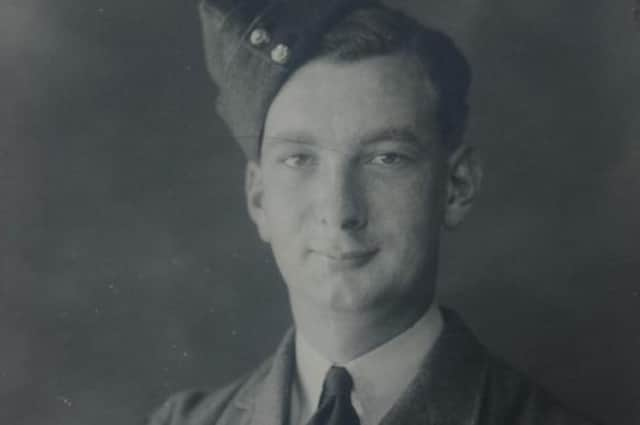

Windsor Francis Richard Webb, who was born in 1924 and lived on New Road, Peterborough, was 18 years old when the aircraft he and seven other members of the 207 ‘Lancaster Bomber’ Squadron were in disappeared without trace during the Second World War.
He had previously been missing in action for 80 years until new research revealed that all eight members of the crew were killed in action when the aircraft was shot down on a bombing raid to Haselunne, Germany on November 25, 1942.
Advertisement
Hide AdAdvertisement
Hide AdThe crew was made up of British, American and Canadian servicemen and over the last two years their families from both sides of the Atlantic and an American research group have made concerted efforts to discover what happened to the men.
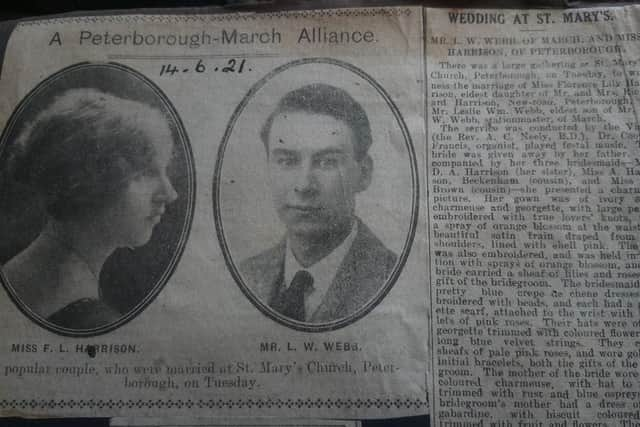

Comprehensive research using operational flight details from RAF records in the UK National Archive and Luftwaffe records from Bundesarchiv uncovered that the aircraft was shot down by a German fighter and crashed into the North Sea 40 miles from the town of Bergen aan Zee, off the coast of the Netherlands.
The families of the servicemen are planning a memorial service in November this year - which marks exactly 80 years since their disappearance. They are seeking formal involvement from the RAF.
Mr Bill Webb, 59, is the second cousin of Windsor. The family never knew what happened to Windsor and the other seven servicemen on the aircraft until recently.
Advertisement
Hide AdAdvertisement
Hide Ad“The story in the family for the last 80 years has been that they disappeared without trace which has caused everyone grief in not knowing what happened and not being able to have closure,” he said.
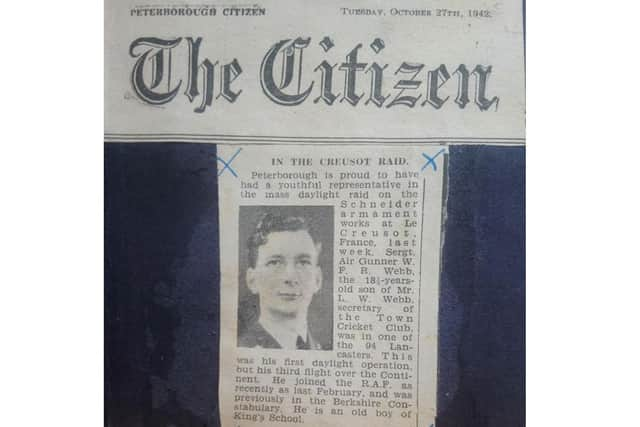

“Five aircraft were sent on individual missions that day, which bomber command called ‘nuisance bombing’. That afternoon, at three o’clock, five Lancasters took off each with separate targets over Germany.
“There was cloud cover when they took off, so the conditions were good because they had less chance of being spotted by air defences and enemy fighters. When they got over the Dutch coast the cloud cover disappeared so they aborted the mission and headed for home.
“Three aircraft made it back safely; one aircraft returned but crashed on landing, in which all of the crew members were killed; but the fifth aircraft, which was Windsor’s, disappeared without trace. It never made it back and wasn’t reported to have been shot down.”
Advertisement
Hide AdAdvertisement
Hide AdBill only became invested in the research into what happened to Windsor in October last year when his son received an email from the American research group - 'The Field Detectives' - researching the disappearance of the 207 Squadron aircraft.
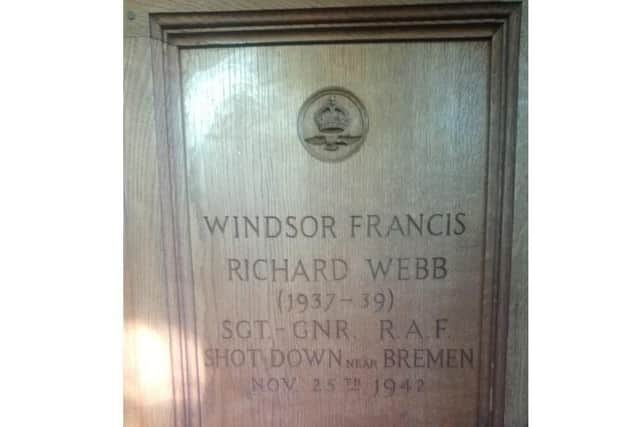

“The pilot was American and his second cousin, Michael Parkyn, became a fighter pilot in the US Air Force,” he said. “After he served his active service he became a crash investigator. With his air force and investigative background he became interested in what happened and began to research it.
“Once they discovered what had happened to the aircraft, they tried to contact the families of all the crew members, having come to a conclusion of where the plane was. The American group did a random search for the families and my youngest son, who owns a production company, received an email from them which he almost deleted but sent to me which is when we became more involved.”
Bill and the families of the seven other crew members hope to hold a memorial service at RAF Langar in Nottinghamshire, which is where the crew were based, in November.
Advertisement
Hide AdAdvertisement
Hide Ad"We plan to meet for a memorial on the runway of the crew’s now-shuttered airbase near Nottingham," he said. "Project Recover, a non-profit organisation to bring America’s MIAs home, is reviewing incident data to determine whether the aircraft and its crew can be located at the bottom of the North Sea to mark their resting place and designate a war grave.
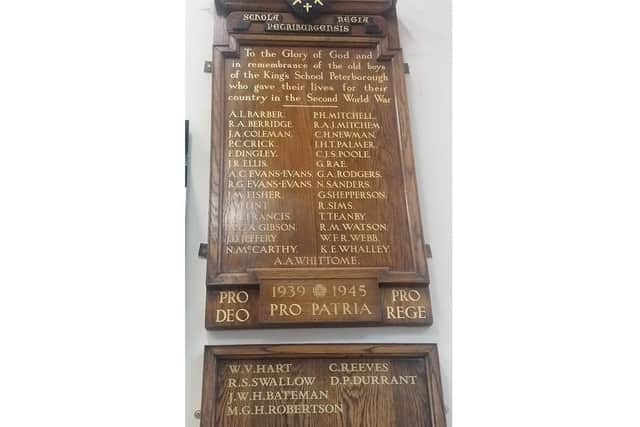

"A talented young producer is also creating a podcast describing the lives, deaths, and aftermath of the crew’s loss for airing on National Public Radio. If we can get RAF involvement, then we hope that the memorial event would include a fly past by the Lancaster from the Battle of Britain Memorial Flight at RAF Coningsby in Lincolnshire.
“We’re talking to the senior figures in the RAF but it’s obviously been difficult over the last few weeks because of the conflict in Ukraine. We know the crash site is at the bottom of the North Sea so we are also thinking about laying a wreath over that spot.”
207 Squadron timeline
- Windsor's aircraft - an Avro Lancaster MK I R5695 EM-C - took off with four other aircraft in the 207 Squadron from RAF Langar, Nottingham, at 15:04 on 25 November 1942. The mission was a bombing raid to Haselunne, Germany.
Advertisement
Hide AdAdvertisement
Hide AdThere were eight crewmen on the aircraft: Alfred Joseph Parkyn, Pilot, American (27); James McGregor Allan, Flight Sergeant, Canadian (24); Eugene Edward Chouiniere, Wireless Operator, American (19); John James Gallimore, Air Bomber, British (26); William John Vandervoort, Navigator, Canadian (26); Windsor Francis Richard Webb, Air Gunner, British (18); James Louis Guichard, Air Bomber, American (20); Jack Slater, Air Gunner, British (21).
- After the initial cloud cover cleared when the 207 Squadron reached the Dutch coast, all five aircraft aborted the mission and turned back to return home.
- Three aircraft made it back safely; one aircraft returned but crashed on landing, in which all of the crew members were killed; but the fifth aircraft, which was Windsor’s, was shot down by German Luftwaffe ace pilot Ernst Heesen, at 16:34, 40 miles WNW from the town of Bergen aan Zee, off the coast of the Netherlands. Ernst Heesen was subsequently shot down by RAF Spitfires on May 3rd 1943.
- The crew were classified as missing in action (MIA) - not traced or confirmed as either alive or dead.
Advertisement
Hide AdAdvertisement
Hide Ad- 80 years later, research by the families of the servicemen and the American research group The Field Detectives used operational flight details from RAF records in the UK National Archive and Luftwaffe records from Bundesarchiv to uncover that the flight was shot down.
Windsor Webb (1924 - 1942)
- Born 26 March, 1924, New Road, Peterborough
- Attended Peterborough Cathedral Grammar School, 1933 – 1937
- Attended Stamford School April, 1937 – 1939
- Joined Berkshire Constabulary in 1939
- Enlisted in the RAF reserve, June 1941
- Trained as an Air Gunner at RAF Dalcross, Inverness, June – August 1942
- Assigned to 207 Squadron (Lancaster Bombers), based at RAF Langar, Nottingham, August 1942
- Died, aged 18, 25 November 1942
The history of the Webb family
Advertisement
Hide AdAdvertisement
Hide AdThe Webb family originate from March, Cambridgeshire, and had a long tradition of working on the railways. Windsor Webb's grandfather was a station master and Windsor's uncle, Cecil Francis Webb, was a goods clerk. However, Windsor's father, Leslie William Webb, initially went into banking and then, through marriage, became involved in the management of a Peterborough-based advertising business owned by his wife's family.
Windsor's father served as a Special Constable in the police force during World War I, which may well have influenced Windsor’s choice of career in joining the Berkshire police force on leaving school.
Any significant military connection came from his uncle, Cecil Francis Webb, who joined the Norfolk Regiment of the British army in 1914 and served on the western front for the whole conflict. In 1920, he joined the Black & Tans and fought in the Irish War of Independence. He refused to discuss any details of either conflict for the rest of his life. In WW2 he was too old to serve in the army and so served as a Special Constable in the police force.
Windsor had a younger sister, Pamela, born in 1931. The family have been unable to trace Pamela. She is presumed deceased, but the family have requested that if anybody knows anything about Pamela to get in touch. She married William Pugh in 1951 and they had three children together, who the family have also been unable to trace.
Advertisement
Hide AdAdvertisement
Hide AdWindsor's cousin, Norman, 92, who lives in Yorkshire, was too young to serve in WW2 but did his National Service for two years as an RAF flight mechanic, commencing in 1947. He initially worked on Rolls Royce merlin engines before working on early jet engines.